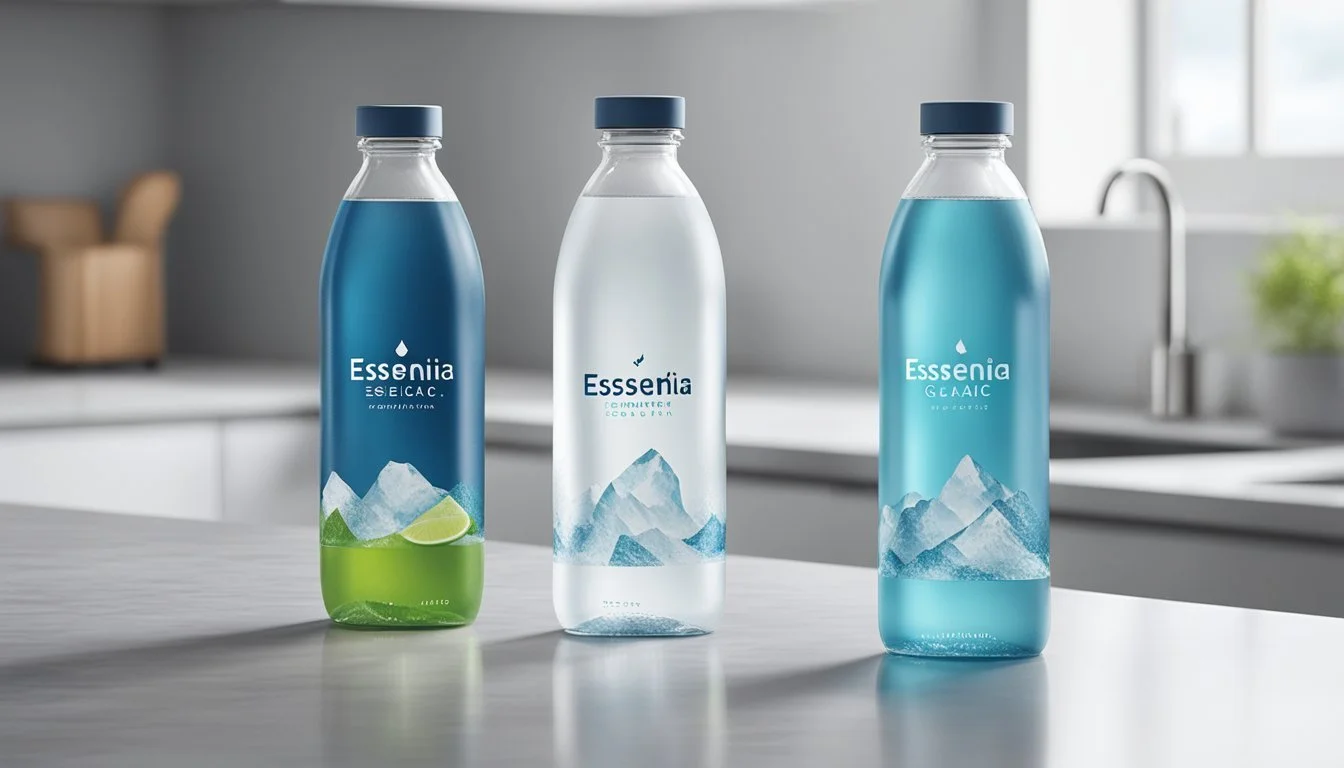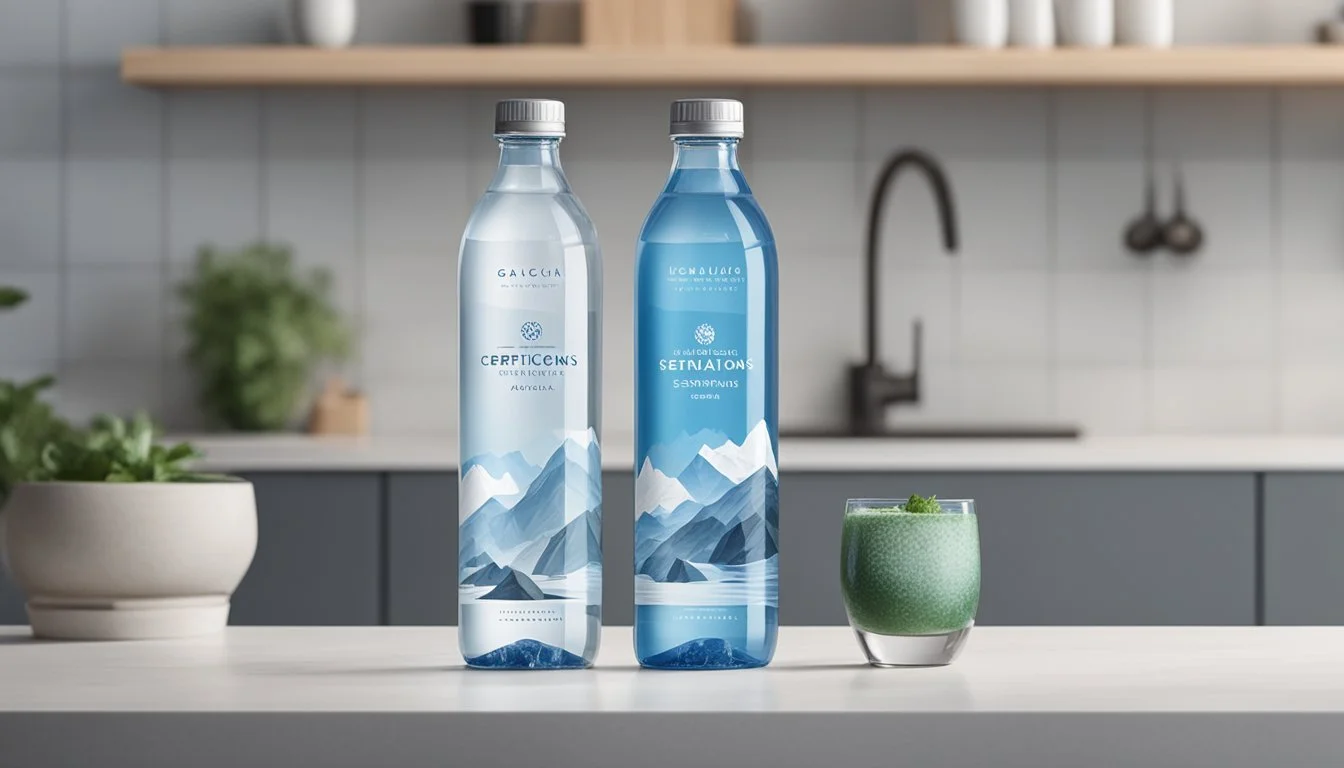Essentia vs. Icelandic Glacial
A Thorough Comparison of Bottled Waters
Choosing between bottled water brands often comes down to personal preference concerning taste, purity, and the brand's environmental impact. Two prominent contenders in the market are Essentia and Icelandic Glacial. Essentia is known for its ionization process and added electrolytes aimed at delivering a smooth taste and better hydration. In contrast, Icelandic Glacial boasts of its natural purity, sourced directly from the springs of Iceland, with minimal human contact, ensuring its pristine condition.
The distinction between the two brands is underscored by their respective approaches to filtration and enhancements. Essentia water undergoes a thorough purification process, including microfiltration and reverse osmosis, followed by the infusion of electrolytes, resulting in an alkaline water with a pH level of 9.5 or higher. Icelandic Glacial, on the other hand, is naturally alkaline, with a pH that typically hovers around 8.4, and markets itself as a sustainable choice, with packaging designed to minimize environmental impact.
Consumers may also weigh factors such as taste, the presence of minerals, and the environmental policies of each company. Choosing between Essentia and Icelandic Glacial may come down to these considerations, as well as individual commitment to sustainability, health benefits, and preference for natural versus scientifically enhanced water.
Comparing Essentia and Icelandic Glacial
When considering bottled water options, Essentia and Icelandic Glacial are two prominent brands with distinct qualities differing in their source and purification process, both aimed at providing enhanced hydration.
Brand Overview
Essentia markets itself as a leader in ionized alkaline water designed for better rehydration, while Icelandic Glacial takes pride in offering natural spring water from Iceland that has been naturally filtered through volcanic rock.
Source of Water
Essentia: Sources its water from local supply and transforms it into alkaline water.
Icelandic Glacial: Harbors its water from the Ölfus Spring in Iceland, a renewable resource that is replenished by rain and snowfiltration through volcanic rocks.
Purification Processes
Essentia's water undergoes a proprietary three-step process that includes purification through reverse osmosis and microfiltration, followed by an electrolyte-enhancement step that adds trace amounts of electrolytes, culminating in an ionization process to increase its pH level.
Contrastingly, Icelandic Glacial relies on the natural purity of its source, with minimal human intervention in its bottling process, emphasizing the natural filtration through the volcanic rock that imparts minerals and a naturally high pH balance, potentially offering health benefits associated with mineral-rich spring water.
Health and Hydration
Both brands cater to health-conscious consumers:
Essentia is positioned for those engaging in physical activity requiring efficient rehydration; its higher pH and added electrolytes claim to help with improved hydration.
Icelandic Glacial, with its naturally occurring minerals and electrolytes from the Ölfus Spring, suggests health benefits due to the purity of its source and the natural electrolytes, which may support hydration.
In conclusion, Essentia and Icelandic Glacial propose distinctive options in the bottled water market, with the former focusing on an engineered process for enhanced hydration and the latter on minimalistic, natural purity from a sustainable spring water source.
Water Quality and Content
In assessing bottled waters, Essentia and Icelandic Glacial, understanding water quality and content is crucial. Evaluating elements such as pH level, mineral content, taste profile, and total dissolved solids (TDS) allows for a detailed comparison.
pH Level Comparison
The pH level determines the acidity or alkalinity of water. Essentia Water touts a high pH of 9.5, achieved through its proprietary ionization process, categorizing it as an alkaline water. Icelandic Glacial, on the other hand, boasts a natural pH of 8.4, due to the water's passage through volcanic rock which naturally enhances its alkalinity.
Mineral and Electrolyte Content
Minerals and electrolytes are vital for hydration. Essentia Water is enhanced with a blend of electrolytes for taste, though its mineral content is not specified. Icelandic Glacial features a balanced blend of minerals like calcium, magnesium, and bicarbonate, which contribute to its smooth taste and hydration properties.
Taste Profile
The taste of bottled water is subjective but influenced by its TDS and pH. Essentia's ionization removes bitter-tasting ions, resulting in a smooth taste. Icelandic Glacial's low mineralization and optimal pH contribute to a clean and crisp taste profile, often described as pure by consumers.
Total Dissolved Solids (TDS)
TDS measures the combined content of organic and inorganic substances in water. A lower TDS level can indicate a pure taste, as is the case with Icelandic Glacial, with a TDS level around 62 parts per million (ppm). Essentia's TDS levels are increased due to the added electrolytes, but this does not negatively affect its taste and may actually enhance the perception of smoothness in the water.
Environmental Impact
When comparing Essentia and Icelandic Glacial bottled water, it's crucial to examine their respective approaches towards environmental stewardship, focusing on their packaging practices and overall sustainability initiatives.
Recyclability and Packaging
Essentia Water uses bottles that are BPA-free and are designed to be recyclable. The company strives to reduce its environmental footprint by encouraging consumers to recycle the bottles. They also have initiatives exploring the use of recycled polyethylene terephthalate (rPET) in their bottles, further aligning with green practices.
Icelandic Glacial, on the other hand, takes pride in their rPET bottles which are also BPA-free. The brand has taken steps to ensure its packaging is not only recyclable but also made from sustainable resources. Their commitment to environmental sustainability is solidified by maintaining a carbon-neutral certification, suggesting that they offset the greenhouse gas emissions associated with their product lifecycle.
Sustainability Initiatives
Essentia is continuously working to position itself among green companies with its various sustainability initiatives. It follows environmentally friendly practices in sourcing and production, though it is not explicitly carbon neutral certified like its counterpart in this comparison.
Icelandic Glacial has been recognized for its outstanding environmental efforts and is one of the few bottled waters to be certified as carbon neutral. The certification is an indication of their pledge to maintain environmentally friendly operations, involving the meticulous measurement, reduction, and offsetting of their carbon footprint. They remain at the forefront of advocating for sustainability in the bottled water industry.
Consumer Considerations
When choosing between Essentia and Icelandic Glacial, consumers weigh various factors including price, availability, and how these brands stack up against others in the market.
Price Point and Affordability
Essentia water is often priced competitively, making it a common choice for budget-conscious consumers. In contrast, Icelandic Glacial tends to be marketed as a premium brand, and its cost reflects this positioning. Prices can vary based on the retailer, but typically, Essentia is more affordable than Icelandic Glacial. Stores like Costco may offer bulk purchasing options that can reduce the cost per bottle for both brands. Compared to other brands like Fiji, Voss, and Penta, which are also considered premium, Icelandic Glacial is similarly priced, while Aquafina, Dasani, and Poland Spring often present more cost-effective options for the price-conscious consumer.
Availability and Accessibility
Icelandic Glacial's unique selling point is its source, but this can sometimes limit its availability compared to Essentia, which is widely distributed in the United States and can be easily found in both domestic and international markets. Consumers may find Essentia in various outlets including supermarkets, convenience stores, and through online vendors. In comparison, Icelandic Glacial might be more exclusive and not as readily available, making Essentia the more accessible choice for most consumers.
Comparison With Other Brands
In the bottled water market, brand comparison often extends beyond the price and accessibility to factors such as taste, source, and added health benefits. Consumers typically regard brands like Smartwater and Fiji highly for their electrolyte-enhanced products and distinct taste profiles. It's important to note that Nestlé Pure Life is recognized for wide availability, but it might not rank as highly in consumer taste preference. Essentia boasts its ionization process, which the brand claims make its product better hydrating. Icelandic Glacial, on the other hand, emphasizes its natural alkalinity and the pristine source of its water. Consumers seeking high pH water often gravitate towards these two brands as opposed to Dasani or Aquafina, which are purified waters with added minerals for taste.
Certifications and Standards
In the realm of bottled water, the purity, quality, and environmental impact are often delineated by various certifications and standards. Essentia and Icelandic Glacial, two popular brands in this space, boast distinctive credentials that set them apart.
FDA Regulations
Essentia and Icelandic Glacial are subject to the United States Food and Drug Administration (FDA) regulations, ensuring that both brands meet the federal requirements for bottled water. These regulations cover the safety, quality, and labeling, which are integral to consumer protection. The FDA mandates include standard identity, standard of quality, and good manufacturing practices.
Other Certifications
Essentia:
It does not explicitly highlight CarbonNeutral certification in the provided context.
Icelandic Glacial:
CarbonNeutral certified: This brand has earned recognition for its environmental responsibility. Icelandic Glacial's operations are offset to net zero emissions, fulfilling its commitment to a cleaner environment and attaining the CarbonNeutral company certification.
Conclusion
When comparing Essentia and Icelandic Glacial bottled water, consumers find distinctive features that may sway their preference. Essentia is characterized by its higher pH level, typically 9.5 or more, which is achieved through micro-filtration, reverse osmosis, and ultraviolet exposure. This process not only purifies but also infuses the water with electrolytes, making it notably smooth.
Icelandic Glacial, on the other hand, positions itself as offering one of the purest forms of water available. It is sourced from Iceland's natural springs and bottled at the source, which contributes to the brand's commitment to environmental sustainability.
When evaluating bottled water, it is essential to consider individual preferences as well as potential health benefits. One brand may excel in taste while another is preferred for its mineral content or eco-friendliness.
In terms of recommendations, if one prioritizes hydration efficiency and a higher pH level, Essentia may be the preferred choice. For those who value purity and environmental responsibility, Icelandic Glacial stands out. Each has a loyal consumer base, reflecting the respective qualities of the products.
It is not a matter of declaring a worst or best, but rather understanding the unique selling propositions of each brand and how they align with consumer values and needs. Clear and informed choices can be made based on these distinct differences.






